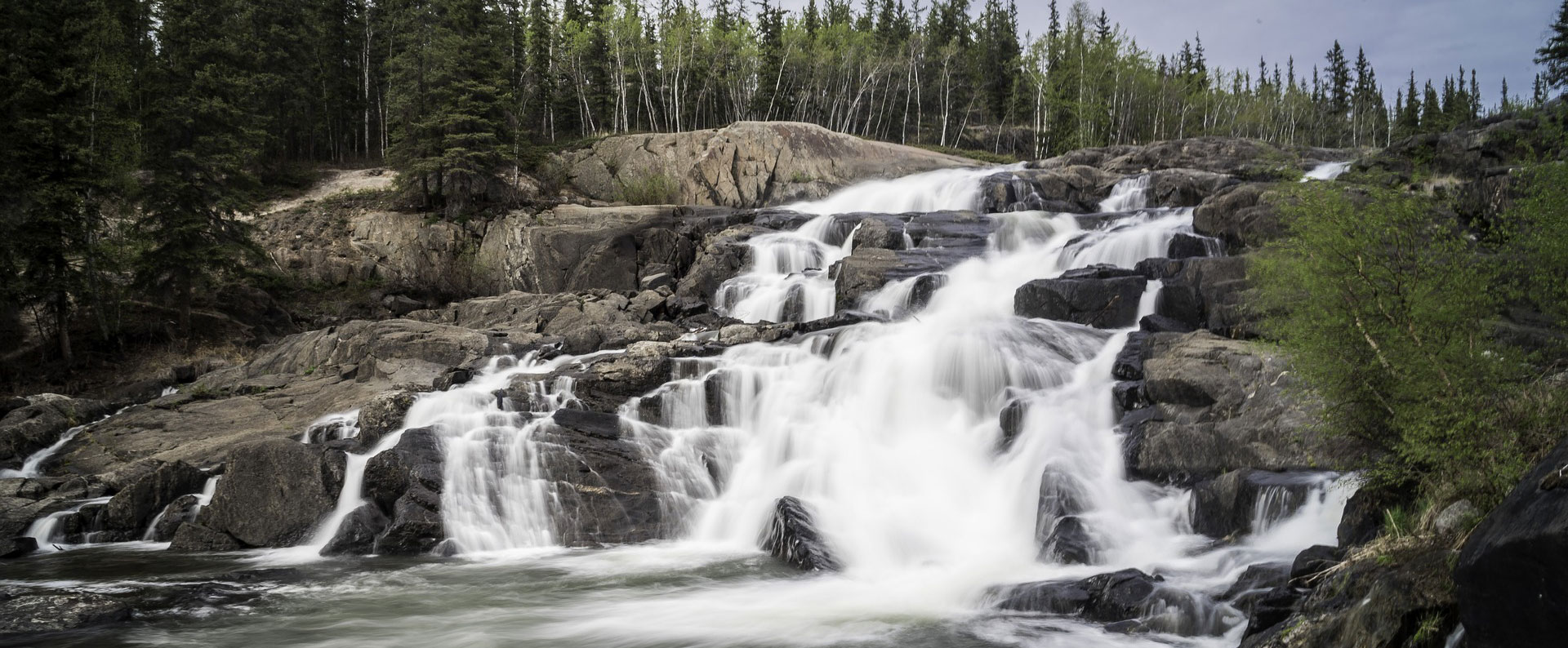Northwest Territories

Bordered to the south by British Columbia, Alberta and Saskatchewan, the Northwest Territories (NWT), along with neighbouring Nunavut, forms the part of the Canadian Arctic that extends beyond the Arctic Circle. The NWT has 11 official languages: nine Indigenous languages, French and English. The main city is the capital, Yellowknife, with a population of 19,500, of which 1,100 are French-speaking. The municipalities of Hay River and Inuvik each have a population of just over 3,500, followed by Fort Smith (population 2,500).
3765
Knowledge of French
1130
French first official language
Source: Statistics Canada, 2011 Census
 Life in French
Life in French
Education
The Commission scolaire francophone des Territoires du Nord-Ouest operates two schools that offer kindergarten to grade 12 as well as a preschool program: École Allain St-Cyr (Yellowknife) and École Boréale (Hay River).
Health

There are several clinics in the Northwest Territories, as well as a territorial hospital (Yellowknife) and a regional hospital (Inuvik). It is mandatory for medical institutions to offer services in French; the territorial government has set up an interpretation service at hospitals and clinics for French-speakers.
Economy and employment
The Conseil de développement économique des Territoires du Nord-Ouest (CDÉTNO) has a leading role in supporting employment and economic development in French. In particular, it provides assistance to job-seekers.
 Immigration
Immigration
Employment

According to a 2016 study released by the Government of the Northwest Territories, the job sectors with the greatest demand over the next 15 years will include:
- Retail and wholesale trade
- Construction
- Finance
- Public administration
- Building operations and maintenance
- Financial services, communications and other services for businesses
- Health, education, social and community services
- Restaurant and food services
- Human resources
- Natural resource development and fisheries operations
- Educational administration.
Settlement services

The Fédération franco-ténoise offers mentoring and other services to newcomers to facilitate their arrival and integration. Their immigration service includes a welcome centre for French-speaking newcomers (Centre d’accueil des nouveaux arrivants).
As mentioned previously, the CDÉTNO provides economic-integration services for newcomers.
The Collège nordique francophone offers general and occupation-specific language courses.
Welcoming Francophone Community

Yellowknife, the capital, is the cultural, economic, tourism and social hub of the Northwest Territories. The city has a number of interesting attractions, including the Prince of Wales Northern Heritage Centre, numerous hiking trails, and the Northern Lights, which are best seen between late August and mid-April. The Welcoming Francophone Community initiative is developing, among other things, new services in French, raising the status of immigration within the municipality and the population, and creating links between the established and new Francophone communities.
Some figures:
17% of the population knows French.
4% of immigrants have French as their first official language spoken.
Source: Statistics Canada, 2016 Census
 What to expect
What to expect
Climate

Yellowknife and Hay River
Subarctic climate
17°C
on average in the summer
-26°C
on average in the winter
In the north
Inuvik experiences significant temperature variations depending on the season.
14°C
on average in the summer
-30°C
on average in the winter
Geography

Southwest
boreal forest in the Mackenzie River Valley, home to the longest river in Canada
Northeast
tundra
Arctic Archipelago
uninhabited Arctic desert
Access
The Yellowknife airport is the relay point between most major Canadian cities and other locations such as Inuvik and Fort Smith.
Two highways connect Hay River and Yellowknife to Alberta and British Columbia.
Further north, the Dempster Highway connects Whitehorse, Yukon to Inuvik and Tuktoyaktuk on the Arctic Ocean.
Read more
Francophonie highlights

Laurent Leroux, a French Canadian, was the first European to travel to Great Slave Lake in 1784 to establish, on behalf of the North West Company (a competitor of the Hudson’s Bay Company), the first two trading posts, Fort Resolution (1786) and Fort Providence (1790) more 300km from Yellowknife.
Arctic guide François Beaulieu, a Métis, accompanied Alexander Mackenzie on his expedition in 1789 on the river that bears the latter’s name. He was the oldest French Canadian in the Northwest.
History

Before the arrival of Europeans, the area that is now the Northwest Territories was already inhabited by the Dene people (particularly in the Mackenzie River Valley) and by the Inuit (on the northern coastal regions and the Arctic Archipelago). These peoples led a primarily nomadic existence, adapting to the area’s harsh climate.
In 1576, the explorer Martin Frobisher began the search for the Northwest Passage. Francophones were part of the many expeditions that explored the territory in subsequent centuries. With the expansion of the fur trade in the late 18th and early 19th centuries, trading posts appeared in the Mackenzie Valley. Many Francophones worked as guides, caterers, clerks and interpreters, but also held positions of authority in the posts established by the North West Company.





